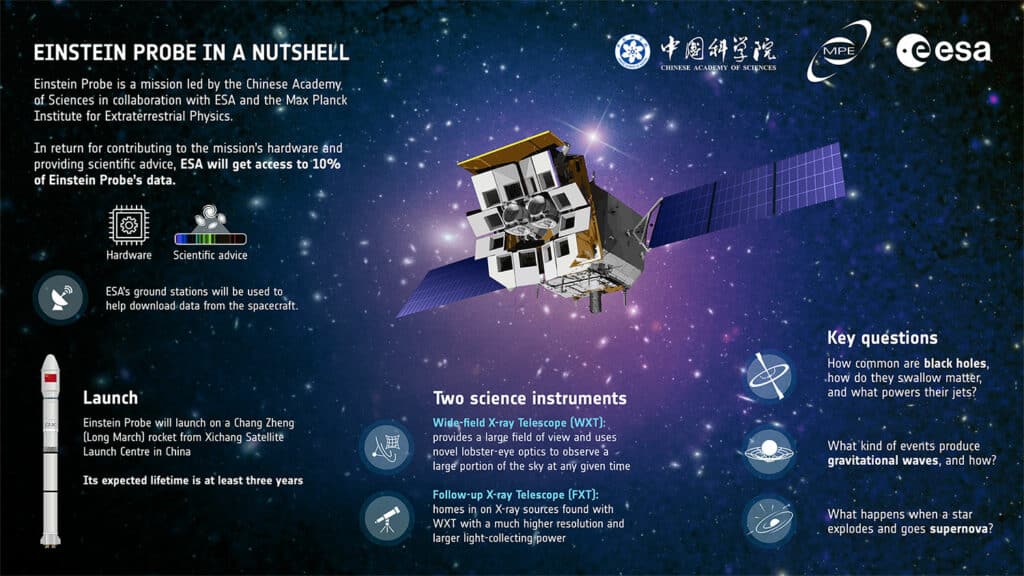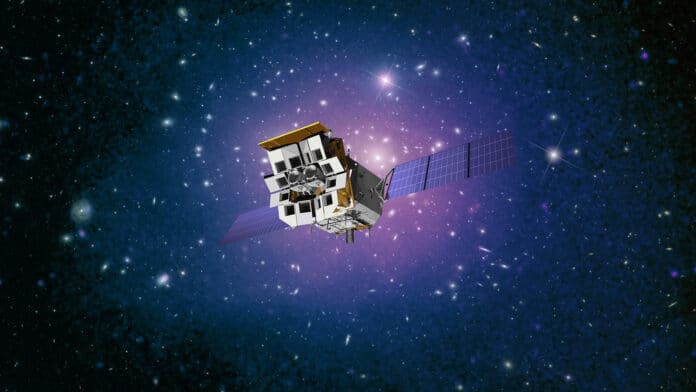The Chinese Academy of Sciences (CAS) spacecraft Einstein Probe is ready to launch in January 2024. The new space telescope will survey the sky and search for powerful blasts of X-ray light from mysterious celestial objects like neutron stars and black holes.
The Einstein Probe is a joint effort between the European Space Agency (ESA), the Max Planck Institute for Extraterrestrial Physics (MPE), and the CAS. This spacecraft will be equipped with a new generation of X-ray instruments with high sensitivity and a very wide view, allowing scientists to study new events in detail.
“Thanks to its innovative design, Einstein Probe can monitor large swaths of the sky at a glance. In this way, we can discover many new sources while at the same time studying the behavior of X-ray light coming from known celestial objects over long periods,” says Erik Kuulkers, ESA’s Einstein Probe Project Scientist. “The cosmos is our only laboratory to investigate the most energetic processes. Missions like Einstein Probe are essential to advance our understanding of these processes and to learn more about fundamental aspects of high-energy physics.”
Unlike the stars we see in the sky at night, most cosmic objects that emit X-rays are highly variable and unpredictable. They are continuously brightening and dimming, and in many cases, they briefly appear before they disappear for long periods.
X-ray light from astronomical sources is very powerful and carries fundamental information about some of the most enigmatic objects and phenomena in our Universe. These X-rays are generated by various events such as collisions between neutron stars, supernova explosions, matter falling onto black holes or hyper-dense stars, or high-energy particles emitted from discs of blazing material that circle such exotic and mysterious objects.

The Einstein Probe will improve our understanding of these cosmic events by discovering new sources and monitoring the variability of objects shining in X-rays all over the sky. This is crucial for advancing our understanding of the origin of gravitational waves. When two hyper-dense massive objects, such as two neutron stars or black holes, collide, they create waves in the fabric of spacetime that travel over cosmic distances and reach us.
Although several detectors on Earth can register this signal, they often struggle to locate the source. If neutron stars are involved, such a cosmic event is accompanied by an enormous burst of energy across the light spectrum, particularly in X-rays. The Einstein Probe will enable scientists to promptly study these short-lived events, helping us to identify the origin of many of the gravitational wave impulses observed on Earth.
To achieve all of its scientific goals, the Einstein Probe is equipped with two revolutionary instruments – the Wide-field X-ray Telescope (WXT) and the highly sensitive Follow-up X-ray Telescope (FXT).
The WXT has an optical modular design that mimics the eyes of a lobster and uses innovative Micro Pore Optics technology. This allows the instrument to observe 3600 square degrees in one shot, which encapsulates 10% of the entire celestial sphere over Earth. With this unique ability, the Einstein Probe can keep a watchful eye on almost the entire night sky in three orbits around Earth, with each orbit taking 96 minutes to complete.
The new X-ray sources and other interesting events spotted by WXT are then carefully studied with Einstein Probe’s more sensitive FXT instrument. What’s even more impressive is that the spacecraft alerts other telescopes on Earth and in space to swiftly point towards the new source and gather multi-wavelength data, enabling a more thorough study of the event.
ESA provided support for testing and calibrating the X-ray detectors and the optics of WXT. It also developed the mirror assembly of one of FXT’s two telescopes in collaboration with MPE and Media Lario (Italy).
